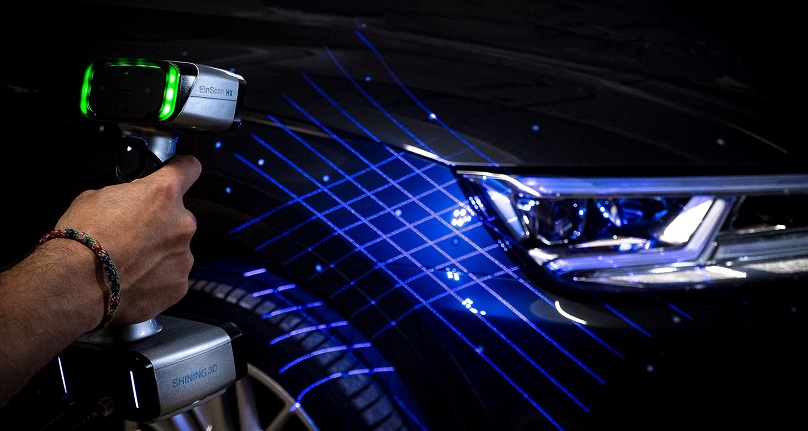Introduction to 3D Scanners
3D scanners are powerful tools that are effective and precise in their areas of application. At least that’s the general summary. But what exactly are 3D scanners? How are they structured and where are they used? The experts from Mako-Technics create more clarity about the devices in this article. Today we would like to give you an introduction to 3D scanners. Would you like to find out more about the structure, function and areas of application? Then you are exactly right here.
These are 3D scanners
At first glance, her name sounds highly technical. Therefore, in this post we give you an easy to understand explanation about 3D scanners. Because it’s not that complicated. Basically, 3D scanners are devices that digitally record tangible objects and convert their geometry into computer data. Measuring and converting objects is certainly also possible using other methods. This can be done, for example, with coordinate measuring devices. Or the classic way of measuring by hand. However, both variants are extremely slow and often imprecise. The disadvantage of coordinate measuring machines is that the objects have to be placed on special devices in a laboratory. In many cases this is not very user-friendly. At these points, 3D scanners make life a lot easier.
Everyone is able to achieve precise measurement results with 3D scanners. When used, the devices capture not just a few points, but millions of them. Simultaneously. In this way, an overall picture of an object can be created in a very short time. 3D scanners are therefore extremely effective in use. For the scanner, it makes little difference whether you capture only a few or a few hundred measuring points.

The decisive factors that speak in favor of 3D scanners are precision, flexibility and speed. A clear added value in direct comparison to other measurement methods. Summarized as an umbrella term, one can say that the devices are very user-friendly. Would you like to find out something about the exact function of 3D scanners? So far we have given a rough introduction to 3D scanners. In the further course of our article we will of course now go into the function. The Mako-Technics team is very familiar with the devices thanks to its decades of experience in the field of reverse engineering. You can learn from experts here. Make use of our expertise.
The function of a 3D scanner
A 3D scanner is capable of producing hundreds of thousands of distance measurements per second. This is made possible by the fact that the scanner throws a grid of laser lines (or white lines of light) onto the object. These laser or light lines are reflected from the respective surface. So much for distance measurement at this point.
If target marks are now attached to the objects, the scanner can generate a reference frame. This enables him to classify positions in space. He knows where he is compared to the goals. If enough target marks have been used and a good frame of reference has been created, the device can create a seamlessly scanned surface.

The surface mesh created in this way can be used in different ways afterwards. Areas of application are, for example, in quality assurance. Or the surface mesh serves as a reference for creating a new CAD model for reverse engineering. They are also used for comparison with existing 3D CAD models.
Limitations of 3D scanners
As optical devices, 3D scanners can only measure what they see. A wide viewing window is available on one side for this. On the other hand, however, they also have a distance window. They work most effectively within this distance window. However, this also means that you cannot scan an object without getting close enough to it. Even a geometry that is too narrow can pose a complicated hurdle to the scanning process.
Furthermore, the surface quality of an object can be a hindrance. It ultimately depends on the speed and user-friendliness of the scanning process. Scanners can have problems capturing clear, black, or glossy surfaces.

Most of the time, however, this can be easily remedied. A simple adaptation of the software is often sufficient. For example, you can easily change the camera’s shutter speed. As a result, they let in either more or less light. Even this small measure often solves many problems.
Résumé
As described at the beginning, 3D scanners are powerful tools that can make your work much easier in their respective areas of application. Like every product, there are also limitations or hurdles to be overcome in some areas with 3D scanners. With little tips and tricks, however, these can usually be eliminated in a short time.
If you would like to find out more about 3D scanners, we recommend our article “The right 3D scanner for you”. At this point we hope to have given you a simple and interesting introduction to 3D scanners. If you have any further questions or ideas, please do not hesitate to contact us! For example, you can easily reach us using our contact form.






